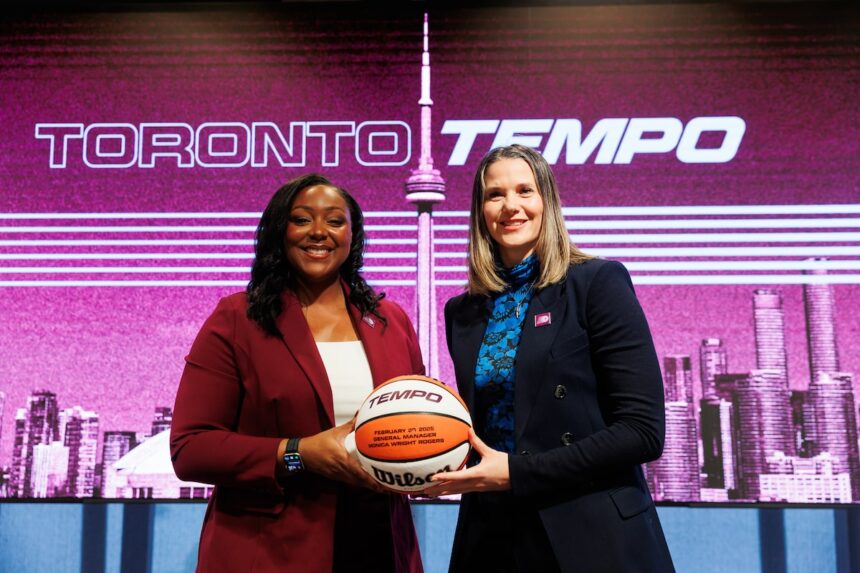A national shift has taken root in Canada’s sporting landscape, though you might not notice it watching mainstream sports networks. Sixty percent of Canadians report a more positive perception of women’s sports in 2024, according to a comprehensive study released last week by the Canadian Women & Sport organization.
This didn’t happen overnight. The momentum builds on years of grassroots efforts, capped by recent professional league expansions that have created what sports economists call a “visibility tipping point” for women’s athletics in the country.
“We’re witnessing a fundamental reorientation in how Canadians view women’s sports,” explains Dr. Allison Reid, sport sociology professor at the University of Toronto. “It’s no longer seen as a secondary offering but increasingly as compelling sport in its own right.”
The study surveyed over 3,500 Canadians across provinces and demographics, revealing interesting regional variations. Atlantic provinces showed the strongest support at 68%, while Quebec reported the most significant year-over-year improvement at 14%. The Prairie provinces, traditionally hockey strongholds, demonstrated the most balanced interest across multiple women’s sports including basketball and soccer.
I spoke with Emma Grainger, a Halifax hockey mom whose daughter plays in a local league that’s seen registration jump 23% this season. “Five years ago, my daughter had no professional women players to look up to here in Canada. Now she wears her PWHL Toronto jersey to practice and can name every player on the roster,” Grainger told me during a weekend tournament in Dartmouth.
The report attributes this perception shift to three primary factors: increased media coverage (though still only representing about 5% of total sports coverage), the successful launch of professional women’s hockey through the PWHL, and Canadian success in international competitions.
Sports economist Parker Henderson points to the financial implications. “Corporate Canada has started to recognize the untapped market potential. We’re seeing sponsorship dollars follow viewership, creating a virtuous cycle that funds further growth,” Henderson explained during a phone interview from his Calgary office.
The federal government has noticed too. Sport Canada recently committed $25 million toward women’s sport development initiatives over the next four years, focusing on infrastructure and coaching development. Sports Minister Carla Qualtrough called it “an investment in Canadian excellence and equity” during the funding announcement.
Not all findings were positive, however. The study highlighted persistent gaps in infrastructure investment, coaching resources, and pay equity. Women athletes still earn approximately 18% of what their male counterparts make in comparable professional leagues, according to data from the Canadian Centre for Ethics in Sport.
Vancouver’s Sarah Leung, who played university basketball before becoming a youth coach, sees the challenges firsthand. “The positive perception is wonderful, but it needs to translate into structural support,” she said. “My girls still practice on outdated courts while the boys’ teams get prime time slots. The attitudes are changing faster than the systems.”
The digital landscape has played a crucial role in this perception shift. Social media engagement with women’s sports content has increased 43% year-over-year according to the report, with younger Canadians driving much of this growth. Platforms like TikTok and Instagram have provided alternative channels for fans to connect with athletes and leagues directly, bypassing traditional media gatekeepers.
“Traditional broadcasters missed the boat initially,” media analyst Jamie Westbrook told me. “They’re now scrambling to catch up to where the audience already is.”
The most dramatic perception shifts occurred in hockey, thanks largely to the inaugural PWHL season. Attendance figures exceeded projections by 35%, with Montreal and Toronto regularly selling out arenas. Television ratings peaked during playoff games, reaching nearly 800,000 viewers for the championship series – numbers that would have seemed impossible just three years ago.
“What we’re seeing isn’t just support for women’s sports – it’s an appetite for good sports entertainment, period,” said former Olympic hockey gold medalist Caroline Ouellette, who now coaches within the Quebec development system. “When people actually watch the games, they become fans. The challenge has always been getting that initial exposure.”
Regional differences tell an interesting story about Canada’s sporting culture. British Columbia leads in supporting women’s soccer, with youth registration at gender parity for the first time. Ontario shows the strongest basketball engagement, while Quebec’s winter sport infrastructure has helped drive hockey’s growth.
The business community has taken notice. Tim Hortons, Canadian Tire, and Scotiabank have all increased sponsorship commitments to women’s leagues by double digits in the past year. The economic impact extends beyond professional sports – sporting goods manufacturers report women’s equipment sales rising 28% annually since 2020.
“This isn’t charity or corporate social responsibility – it’s smart business,” explained marketing executive Priya Singh. “Brands are recognizing that women control the majority of household spending, and authentic engagement with women’s sports resonates with this powerful demographic.”
As we approach the 2026 FIFA Women’s World Cup, which Canada will co-host with the United States and Mexico, industry analysts predict further acceleration in this trend. The tournament is expected to generate over $1.5 billion in economic activity across Canadian host cities.
Despite these positive developments, challenges remain. Many women’s teams still struggle with facility access, media coverage remains disproportionately low, and youth participation drops dramatically during adolescence, particularly in lower-income communities.
Provincial funding models vary widely, creating geographical inequities in development opportunities. Ontario invests approximately $95 per capita in women’s sport infrastructure, while Saskatchewan allocates just $38, according to provincial budget analyses.
The path forward requires continued investment, cultural shifts, and institutional support. But for the first time in decades, the momentum appears to be building rather than stalling.
As Mississauga teenager Aisha Khaled told me at a recent basketball tournament, “I don’t think about whether I’m playing a ‘girls’ sport’ anymore. I’m just playing basketball, and someday I want to play professionally in Canada. That’s something my older sister never thought possible.”
That shift in possibility thinking might be the most important perception change of all.






